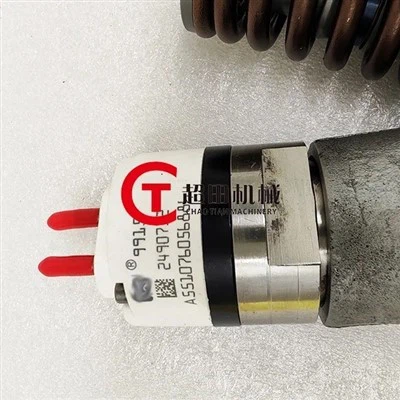Dirt and debris are often overlooked factors when it comes to the performance of a starter motor. As a seasoned starter motor supplier, I've witnessed firsthand how these seemingly insignificant elements can have a profound impact on the functionality and longevity of starter motors. In this blog, we'll delve into the science behind how dirt and debris can affect a starter motor and explore the implications for both consumers and businesses.
How Dirt and Debris Enter the Starter Motor
Starter motors are typically located in the engine compartment, an environment that is constantly exposed to various contaminants. The engine compartment is subject to dust, dirt, oil, and other debris that can be kicked up by the vehicle's movement or generated during the engine's operation. Additionally, the starter motor's proximity to the road means that it can be exposed to water, mud, and road salt, especially in harsh weather conditions.
One of the primary ways that dirt and debris enter the starter motor is through the air intake. The starter motor requires a constant supply of clean air to operate efficiently. However, if the air filter is clogged or damaged, dirt and debris can be drawn into the motor, causing damage to the internal components. Another common entry point is through the seals and gaskets. Over time, these seals can wear out or become damaged, allowing dirt and debris to enter the motor.
The Impact of Dirt and Debris on Starter Motor Performance
Once dirt and debris enter the starter motor, they can have several negative effects on its performance. One of the most immediate impacts is on the electrical components. Dirt and debris can accumulate on the electrical contacts, causing a poor connection and reducing the flow of electricity. This can result in a weak or intermittent starter motor operation, making it difficult to start the engine.
In addition to affecting the electrical components, dirt and debris can also cause mechanical damage to the starter motor. The moving parts of the motor, such as the gears and bearings, can become clogged with dirt and debris, causing them to wear out more quickly. This can lead to increased friction, noise, and vibration, and ultimately, a complete failure of the starter motor.
Another way that dirt and debris can affect starter motor performance is by causing overheating. When the motor is clogged with dirt and debris, it has to work harder to operate, which can generate more heat. Over time, this can cause the motor to overheat, leading to damage to the internal components and a reduced lifespan.
Real-World Examples
To illustrate the impact of dirt and debris on starter motor performance, let's take a look at some real-world examples. Consider a construction vehicle that operates in a dusty environment. Over time, the starter motor on this vehicle can become clogged with dirt and debris, causing it to malfunction. The operator may experience difficulty starting the engine, or the starter motor may fail completely, leaving the vehicle stranded on the job site.
Another example is a marine vessel that is exposed to saltwater and moisture. The saltwater can corrode the electrical contacts and other components of the starter motor, while the moisture can cause rust and other forms of damage. This can lead to a reduced lifespan of the starter motor and increased maintenance costs.
Preventive Measures
As a starter motor supplier, I recommend taking several preventive measures to protect your starter motor from dirt and debris. One of the most important steps is to regularly inspect and clean the air filter. A clean air filter will help to prevent dirt and debris from entering the motor, ensuring that it operates efficiently.
It's also important to keep the engine compartment clean and free of debris. Regularly washing the engine compartment can help to remove dirt, dust, and other contaminants that can accumulate over time. Additionally, make sure to check the seals and gaskets on the starter motor regularly. If you notice any signs of wear or damage, replace them immediately to prevent dirt and debris from entering the motor.


Another preventive measure is to use a high-quality starter motor. At our company, we offer a wide range of starter motors that are designed to withstand harsh environments and provide reliable performance. For example, our 4HK1 Engine Starting Motor is built with durable materials and advanced technology to ensure long-lasting performance, even in the most challenging conditions.
We also offer the 24V 11T Starter Motor T400268 for 1004 1006 Engine, which is specifically designed for use in heavy-duty applications. This starter motor is built to handle the high torque requirements of these engines and is resistant to dirt, debris, and other contaminants.
In addition, our Machinery Engine Parts 4W0697 Starting Motor for 3306 3608 is a reliable choice for industrial machinery. It is designed to provide consistent starting power and is built to last, even in the toughest industrial environments.
Conclusion
In conclusion, dirt and debris can have a significant impact on the performance of a starter motor. By understanding how these contaminants enter the motor and the effects they can have, you can take steps to protect your starter motor and ensure its long-term reliability. As a starter motor supplier, we are committed to providing high-quality products and expert advice to help you keep your vehicles and equipment running smoothly.
If you're in the market for a new starter motor or need advice on how to protect your existing one, we'd love to hear from you. Contact us today to discuss your needs and explore our range of starter motors. We're here to help you find the right solution for your application and ensure that your starter motor performs at its best.
References
- "Automotive Electrical Systems" by William H. Crouse and Donald L. Anglin
- "Marine Electrical Systems" by Nigel Calder
- "Heavy Equipment Maintenance and Repair" by John F. Kelly






